Shrub roses: varieties and rules of care
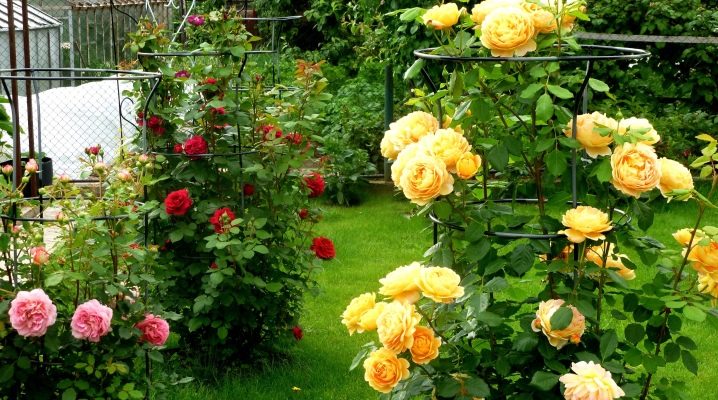
Shrub roses belong to the Rosehip family. They appeared in nature about 40 million years ago. The ancient Greeks, Persians and Romans first began to use the plant to decorate the nearby territory of the dwelling. The stunning beauty of these roses and ease of care makes them indispensable for professional gardeners and hobbyists.

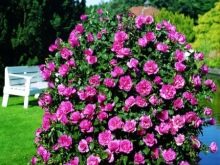
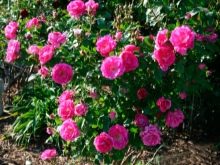
Peculiarities
Shrub roses can look very varied. It is not only flowers that differ in different species and varieties. Even the crown of the bush itself can be wide and narrow (pyramidal). There are thicker bushes, and there are sparse branches. The height of the bushes is also very diverse. Giant plants up to 3 meters in height and their dwarf cousins - up to 0.5 m are affected. The branches of the bushes are of two types: uterine (main) and annual shoots, which appear in spring. The leaves are represented by pinnate plates that have a serrated edge. Also, each leaf has two stipules.
The peduncle has various lengths ranging from 10-15 to almost 1 meter.
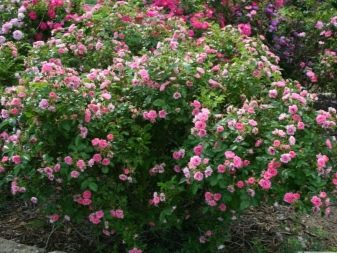
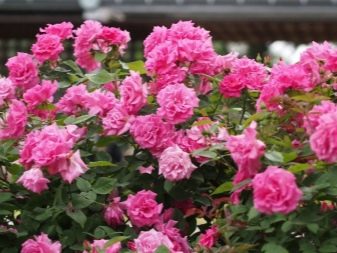
The flowers have many petals (5-120 pieces), and the diameter of the main decoration of the bush reaches 20 centimeters. There are both single flowers and those that are part of inflorescences. Currently, a huge number of bush roses have been bred, which differ in the duration of flowering, the shape and color of the flowers, as well as their aroma. Only bright blue roses do not exist in nature. But they invented such flowers that change their color during the flowering period.
Many varieties of spray roses resemble a regular rosehip, but more original-looking specimens are also present. There are such bushes that bloom only once, and then only delight with their greenery, but there are others that release beauty every year in a suitable season.
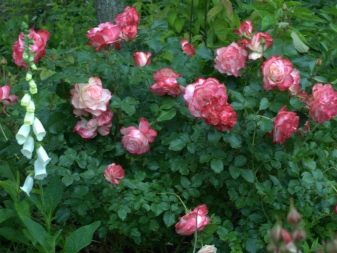
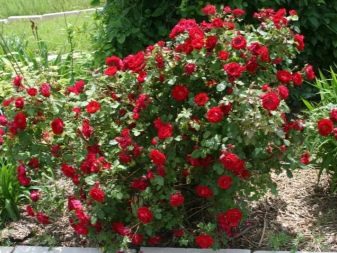
The main advantages of spray roses are:
- relative frost resistance compared to ordinary roses;
- undemanding care;
- they make excellent hedges.
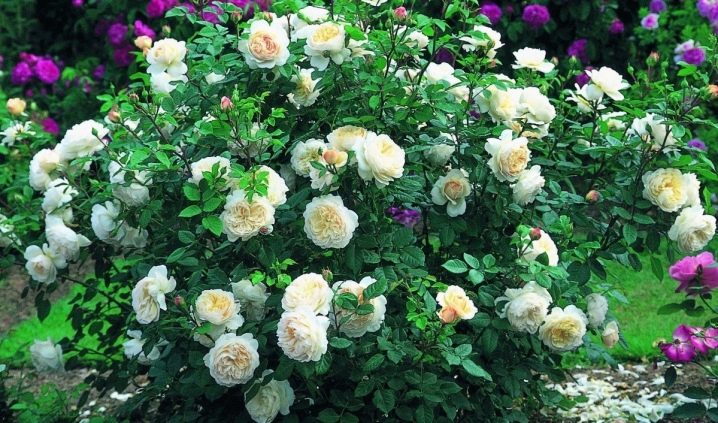
The best varieties and their characteristics
Shrub roses are very diverse in their species composition. You can find a copy for every taste and color. But some of the most popular spray roses are those bred by breeder D. Austin. These are the so-called English roses, which combine the genes of the floribunda, bourbon rose and hybrid tea.
English bush roses are very versatile and unpretentious.
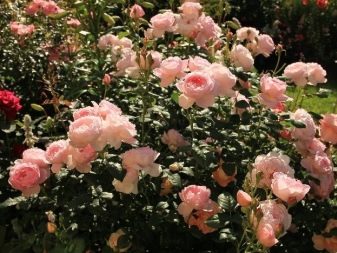

For example, the variety Spirit of Freedom has a truly gorgeous look: flowers with an abundant number of petals in the form of a bowl, which, with the development of the plant, acquire a lilac color. This garden rose is resistant to many diseases. The bush grows up to 2.5 meters in height.
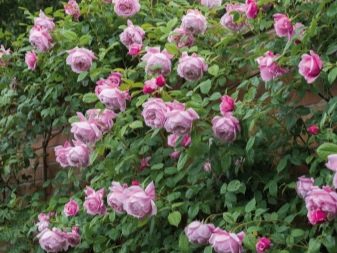
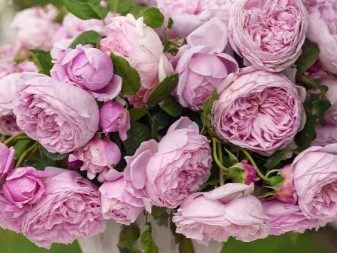
The Albrighton Rambler Is another wonderful musky-scented strain discovered by David Austin. This rose is distinguished by abundant flowering with white flowers, collected in inflorescences, up to 5 centimeters in diameter. There is a button in the middle of the flower. This rose is rain resistant and the leaves are resistant to many diseases.
The bush is quite high - up to 3 meters.
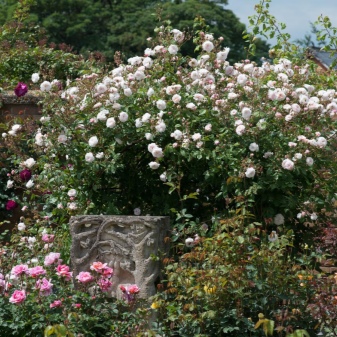
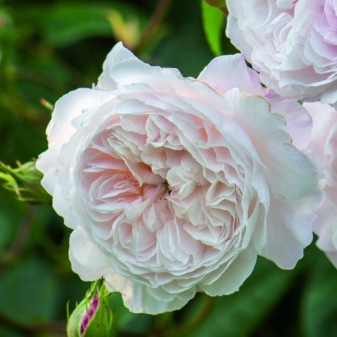
Abrahamdarby - climbing rose with heavy peach flowers that bend down the shoots. Benjaminbritten is a short bush with bright rosette red flowers. A very unpretentious variety that is resistant to fungi. He only dislikes heavy showers, which spoil the crown of the bush.
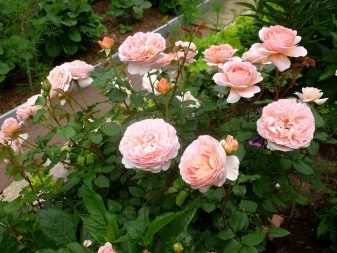
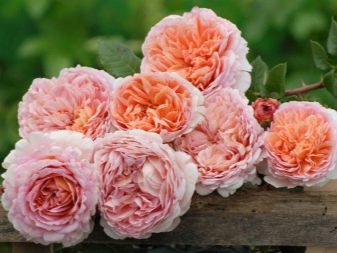
Shrub roses are popular, which belong to the Shraba class. Westerland Is a rose variety of this class, which is interesting in that it can be grown both as an upright specimen and as a climbing rose. Shoots reach 3.5 meters, leaves are complex, glossy, dark green. Flowers can be from light yellow to pink, semi-double and very large. They reach a diameter of 10 cm. One flower lives for about 5 days.
The flowering period is long - from June to September.
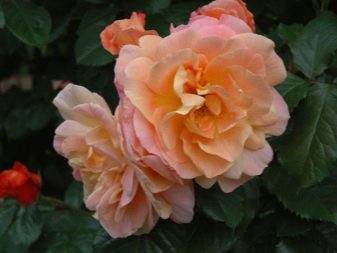
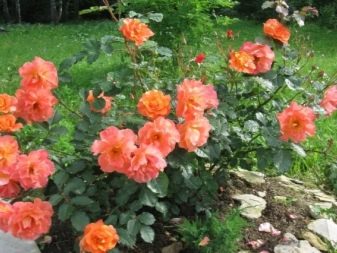
There are popular varieties of French roses.
They differ from other species in the following features:
- mostly small-flowered;
- shoots are directed up;
- double flowers of red shades;
- amazing aroma;
- many small sharp spines.
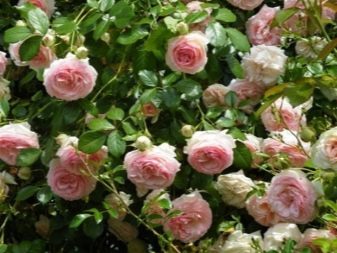

Bright representatives of French roses are varieties such as "Galika" and "Cardinal Richelieu"... The latter have an interesting double-sided color of flowers: one side is purple and the other is pink. Hybrid tea roses have small bushes and two flowering periods with a short break. The flowers are large - up to 10 cm in diameter. Very well suited for decorating small home areas. Hybrid tea variety "Flamingo" has a pale pink color, as the name implies. The flowers are solitary, the flowering period is very long - from the beginning of June to the very frost.
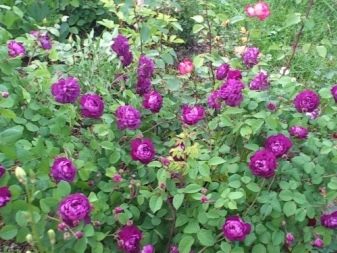
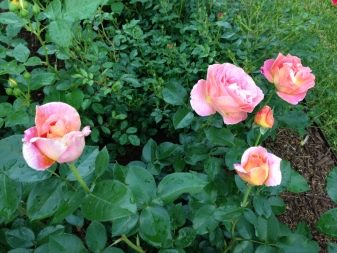
"Big Purple" - an excellent representative of the purple hybrid tea rose. The flower has 35 petals, up to 15 centimeters in diameter. Quite frost-resistant species and, despite its some exoticism, is suitable even for growing in the Moscow region. Floribunda - This is another popular type of spray roses. Its varieties are very winter-hardy, which makes it possible to use floribunda as a park. Flowers are collected in inflorescences.
Popular varieties of Floribunda are Lily Marlene and Niccolo Paganini.

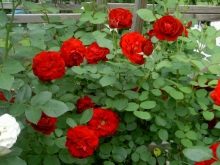

"Lily Marlene" are plants with bright red flowers up to 8 cm in diameter. The bushes reach half a meter in height, characterized by their abundant greenery. Almost not susceptible to any diseases, except for powdery mildew. They are perfect for any area and have another enviable advantage - a very long flowering period. Lily Marlene blooms all summer.
"Niccolo Paganini" more suitable for warm regions of the country. Very beautiful burgundy flowers have a velvety texture. There are about 12 buds in the inflorescence. For this variety to thrive, it needs a fairly fertile soil.
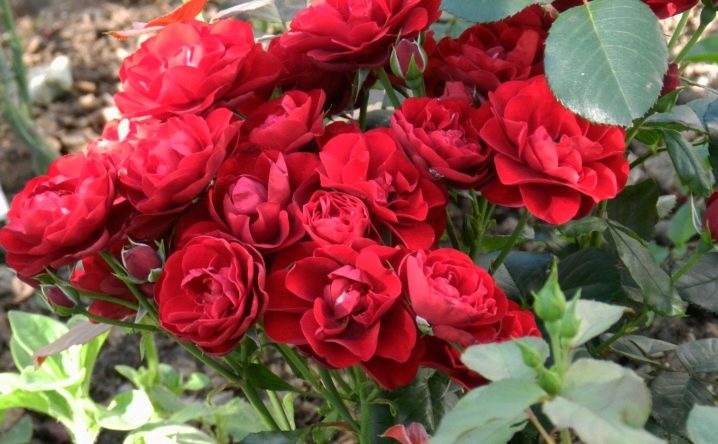
Speaking of bush roses, one cannot fail to mention climbing varieties that are very popular for landscape design. For example, known and loved by many gardeners, Excelsa... The variety is very old, it was bred at the beginning of the 20th century. This lovely rose has bright pink flowers with a fragrant, stunning scent. It grows very quickly. The undoubted decorative qualities of this rose are accompanied by absolute unpretentiousness and ease of care. "Excelsa" easily tolerates frosts, grows in unfertilized soils.
It blooms for about a month, and the foliage is pleasing to the eye until frost.

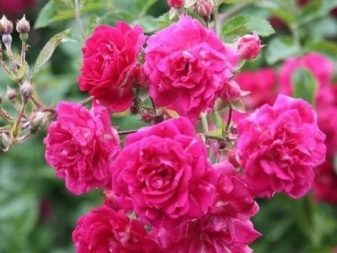
Landing rules
In order for the rose to please the eye as long as possible and not die, it is necessary to plant the bushes correctly. The whole further life of the plant depends on this. How to plant bush roses correctly: from the choice of seedlings to the time and place of planting.
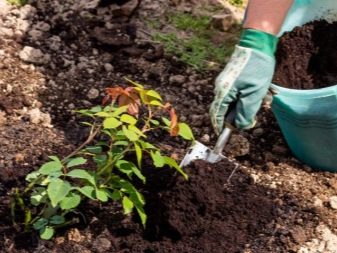
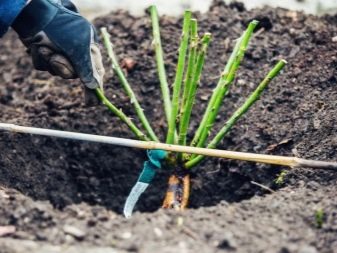
Selection and storage of seedlings
The growth and development of an adult plant depends on the health of the planting material. Nobody wants to buy low-quality seedlings. Here's what to look for when buying planting material.
- Compliance of the variety and external characteristics with further growing conditions. Not all varieties of spray roses are universal. Many die from severe frosts, typical for the northern regions of our country, while others will not withstand the southern heat. Therefore, it is necessary to carefully study the possibilities of the selected species to grow in a certain territory. External characteristics also cannot be ignored.If roses are approaching an already decorated area, then it is important to predict how the bushes will be combined with other plants and whether they will fit in an adult state in the place they have been assigned.
- Are the seedlings grafted or not. A lot depends on this factor. Some grafted bush roses thrive exclusively in greenhouses. Plants on their own roots are more adapted to life in the open field, but they are inferior in the variety of shapes and colors to their counterparts, as well as in many other factors. Non-grafted plants often do not take root well, as they take a long time to build up the root system. But they exclude root growth and excess of branches.


- The age of the seedlings. Plants must be no more than 3 years old. It is these specimens that will easily take root, since they will be more labile about changing growing conditions. Old roses lose their appearance: they have less abundant flowering, foliage develops worse, more susceptible to diseases and pests.
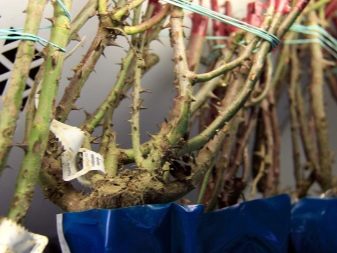
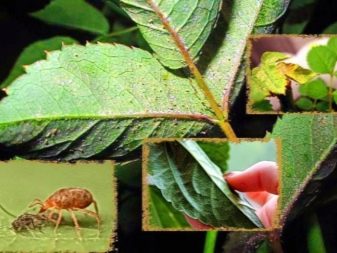
- The appearance of the plant. High-quality planting material of bush roses has 2-3 lignified stems, and the rest should look fresh and green. Sluggish stems indicate the drying out of the plant or about the disease. The roots should also be in good condition: developed, strong, not broken off. Leaves that remain on seedlings are recommended to be checked for various spots and drying out.
- In what form they are sold. High-quality seedlings must be stored for a long time. It is not known exactly when they will be acquired, and how far they will have to be transported. If containers in the form of pots or containers are not used, then polyethylene is used over wet rags or paper.
The seedlings should also be stored in a certain way; if stored improperly, it is easy to spoil the plant, and there will be nothing to plant.


This is how the correct planting material should await planting.
- After purchase, the root system of the plant must be disinfected in order to avoid the growth of bacteria and pathogens. To do this, you can dilute a solution of foundationol or copper sulfate and dip the roots of a bush rose into it.
- Small pieces can be stored in the refrigerator. To do this, they are placed in a container and wrapped in polyethylene with holes or paper. Plants are sprayed in this form every 3-5 days. If the temperature in the refrigerator is more than 3 degrees, then the roses can release shoots, since they cannot be at rest. This is normal and does not affect the further transplantation of seedlings. In this form, roses can be stored for about a month.

- If the planting material already had tender sprouts when purchased, then it cannot be stored in the refrigerator. Now it should be transferred to pots with a capacity of about 2 liters. This volume allows you to form an excellent earthen lump, which will be easy to move to the future place of growth. It is best to store such plants on a covered balcony or in a cellar, which will allow them to gain some vegetative mass and prepare for transplantation. If the planting material will overwinter on the balcony, direct sunlight should be avoided. In the spring, it is recommended to arrange hardening of seedlings with the help of a draft.
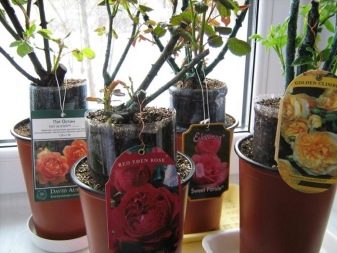

- If there is a place in the summer cottage, then the seedlings of spray roses can be stored in the snow. To do this, choose the darkest, unheated corner. A large cardboard box is placed there and containers with planting material are installed in it, which is covered with peat. The next layer is fabric, and the last is snow, which is abundantly covered with the structure. For the longest possible storage, the snowdrift is covered with spruce branches.
- If seedlings with an open root system were purchased, then they should be stored in a bucket of water in a cool place. They are not very durable and will remain viable in this state for about a week.


Disembarkation time and place
The bushes of this beautiful plant can be planted both in spring and autumn. Many plant roses purchased in containers throughout the entire season, including the hot summer. The optimal decision for planting bush roses should be made based on the region of growth and the variety planted itself. In the southern regions, it is advisable to plant in the autumn. Since frosts in this region come quite late, the roots will have time to take well and develop power. In central Russia, it is best to plant roses in the spring, when the frosts receded and the soil had time to warm up to a temperature of 10 degrees.
Shrub roses are distinguished by their love of the sun, so when choosing a place, you should focus on an area with good lighting.

Roses do not like dampness, so the place of their growth should not be influenced by groundwater and melt water. Drafts are a bad companion for these plants, so too open an area for them is also not suitable. A planting hole for a bush rose must be at least 0.5 meters away from other plants for normal crown development.
A hole is dug in depth and width so that the entire root system is located there as comfortably as possible without bending of individual large roots. After installing the plant, sprinkle it with prepared fertilized soil, trample and lay a layer of peat on top. Then watered abundantly. When the plant takes root, they spud the rose and mulch the soil.

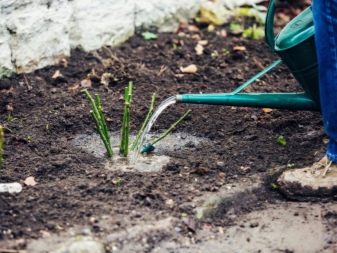
How to reproduce?
The most popular methods of propagation of a bush rose are methods: cuttings and layering, seeds, grafting, dividing the bush. Each method has its own specific advantages and disadvantages, which must be considered when choosing. Reproduction by cuttings is carried out at the end of summer. For this method, the strongest and healthiest specimen is selected that does not have damage and disease. A ripe shoot, equipped with several leaves, is cut off and only the top greens are left. A shoot is planted in a pre-prepared container with a prepared soil mixture, watered, covered with a film and await rooting.
Layers are used if the bush rose has long and flexible shoots.
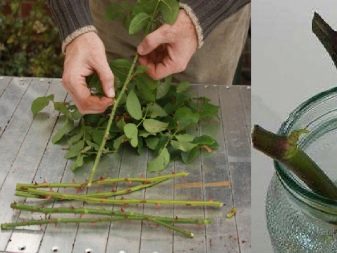
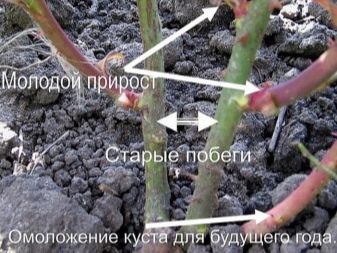
Then one or more of the healthiest branches is bent to the ground, and an incision is made at the point of contact. A match is inserted into this incision, and the end of the shoot is vertically fixed with a support. The cuttings can be transplanted separately when they give rise to the first bud and take root.
Seeds of spray roses are propagated mainly by breeders. For this method of reproduction, wild species are used, since they are most adapted to it. Red fruits are harvested in August-September, then they are peeled and placed in the sand for 4 months at low temperatures. In the spring, they are soaked in a growth stimulant solution and kept there for about two hours. Then sow, covering with a thin layer of soil, and wait for the first shoots. After the appearance of two true leaves, the plants are separated and continue growing.
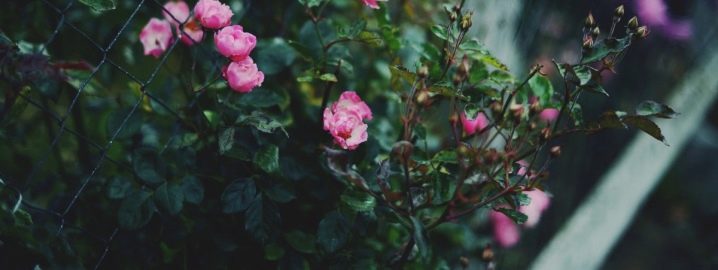
It is quite difficult to propagate a bush rose by grafting. To plant a varietal specimen, common rosehip is most often used as a stock. A T-shaped place for grafting is cut out on the uterine shoot, then a bud with a piece of wood is cut out from the scion. Insert this peephole into the cut-out slot and wrap it with foil. After three weeks, it is necessary to check the condition of the kidney. If it does not take root, it will turn black. In spring or autumn, a large overgrown bush can be easily propagated by division.
To do this, you need to sharpen a sharp instrument and sterilize it.
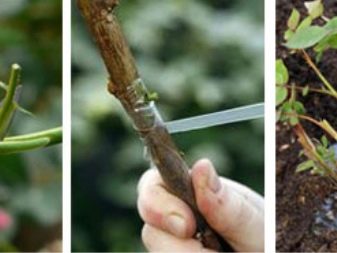
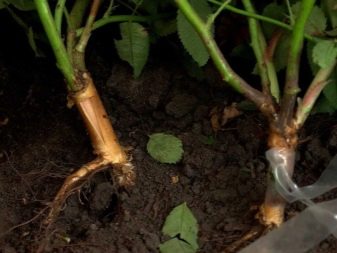
Then dig out the bush and start dividing it in such a way that at least one stem and several roots remain on each separate part.
How to care?
Growing bush roses is not too difficult if you know how to properly care for them.Gloves should be used during any operations with roses, as thorny thorns easily injure the skin and leave very painful injuries. One of the main steps for caring for shrub roses is pinching them. Tear off the leaves at the ends of the shoots from large and small bushes should be in order to form a wide and dense crown. Otherwise, the shoots will grow and disrupt the decorative effect of the plant. For seedlings of the first year of life, it is very important to cut off the first small buds. The plant spends a lot of energy on flowering, and for first years this can interfere with the full development of the bush.
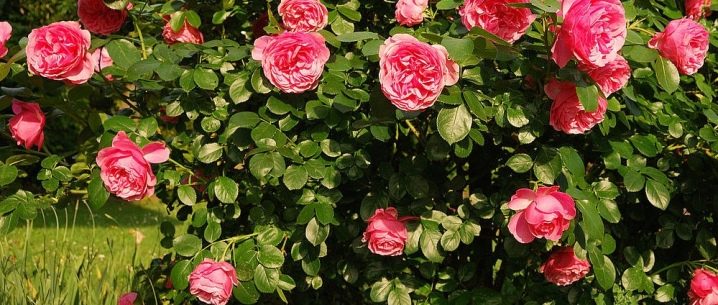
Top dressing
The appearance and health of the plant depends on feeding. This moment in leaving must not be forgotten. The sequence of mandatory dressings for bush roses is as follows.
- Early spring (April-May). They are pruned and fed with nitrogen-containing fertilizers and organic matter. From inexpensive and high-quality products, urea, nitroammophoska and ordinary cow dung are perfect.
- Flowering period. Before flowering, it is necessary to support the plant with the introduction of horse manure, chicken manure or ash. All this can be sprayed with a special broom within the plant. It is best to do this procedure twice before flowering.
- Immediately after flowering. It is necessary to nourish the bush rose with a universal fertilizer or mullein solution.
- Before the fall. A shrub rose must be carefully prepared for winter so that it meets it in a healthy state. This top dressing is very diverse in composition: phosphorus, potassium, molybdenum, iron and other trace elements will not be superfluous in caring for rose bushes.
- Late fall. In addition to phosphorus fertilizers, nothing should be added to the soil during this period, otherwise the plant's dormancy may be slowed down. The simplest fertilizer with phosphorus can be superphosphate.


Watering
Shrub roses are rather capricious about watering. It is better not to use tap water, preferring melt or rain water. If there is no way to find it, you can simply stand for ordinary water for 24 hours. The temperature of the water for irrigation is also important: it should not differ much from the ambient temperature, since its abrupt change is destructive for bush roses.
Roses love moisture, but not an excess of it, with a lack of water, they will develop poorly, the leaves will begin to crumble, and the shoots will stop growing.
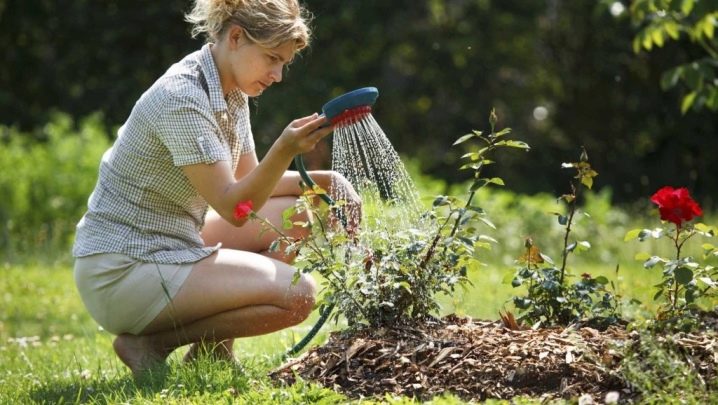
But with an excess of moisture, the superficial root system develops very strongly, which complicates loosening and can even lead to the death of the bush. Watering should be done either early in the morning or late in the evening so that there is no moisture on the leaves during the sunny time of the day.
If the weather is dry, the roses should be watered 2-3 times a week. For regular watering, use half a bucket of water per plant. Once a week, it is recommended to water abundantly, making a hole around the plant and pouring about one bucket of water into it. Sprinkle the watered earth and loosen it. It is important to water the roses immediately after fertilizing the soil so that there is no excess of salts and minerals. Before wintering, roses are not watered. Watering should be finished in August-September, and if these months are rainy, then even earlier.
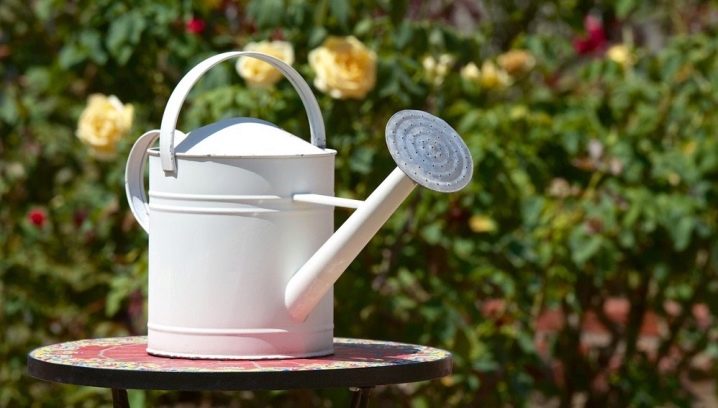
Disease and pest control
Pest and disease control can be carried out in different ways, but the very first help in this difficult task is prevention: visual inspection and waste disposal. Fallen leaves and wilted flowers should be removed in a timely manner, as they quickly rot and provoke the appearance of rot and the reproduction of pathogens.
Timely weeding also helps to remove excess weeds that can harbor various kinds of microorganisms.
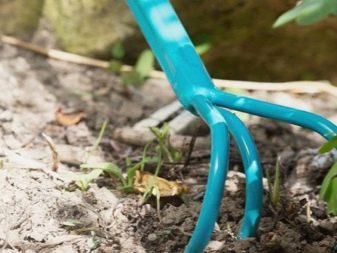
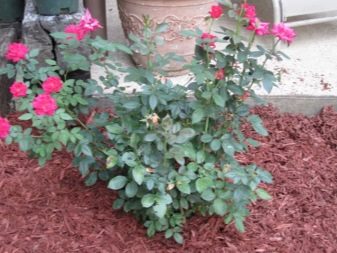
Fungal diseases can cause the greatest harm to bush roses, so adequate care should include pruning and thinning the crown.A place for planting with no high humidity will help to avoid the attack of fungal microorganisms. This also applies to storage of seedlings and adult plants: high humidity during wintering is unacceptable. If, nevertheless, the bush rose is affected, you must immediately cut off all affected shoots and leaves. Then treat the plant with a fungicide. If you leave foci of infection on the rose, this can lead to the death of the entire bush.
Not only fungal diseases affect bush roses. Ailments such as powdery mildew, rust, mold, black spot and others are also often manifested. To get rid of these problems, you need to pick up modern affordable drugs for them in time. Their choice will depend on the variety of the rose and the climatic zone of growth.
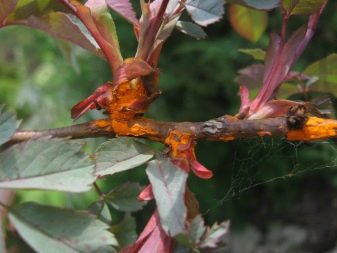

Of the pests that affect bush roses, aphids are the most common. If the accumulation of these insects is not too significant, you can use this method: lather a wet rag with laundry soap and wipe the leaves. If there are a lot of aphids, then insecticides must be used. Shrub roses can also damage other pests: cicadas, ticks, various caterpillars. It is imperative to fight them, since often damage to the plant by insects is followed by some kind of disease due to a weakened state. It is necessary to accurately find out the type of pest and contact the store for the purchase of an agent against a specific insect. To eliminate rodent mammals, it is better to set traps, since they may well spoil roses even more than diseases and insects.
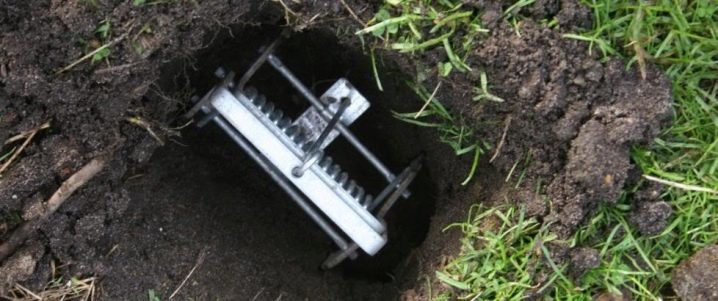
Pruning
Pruning is done to form a beautiful crown of the plant and to get rid of damaged shoots. The best time to prune is early spring, when the buds are just starting to swell. At this time, it is worth taking a closer look and choosing unwanted branches to be removed. After winter, you should pay attention to those branches where the buds have died. They should be removed first to leave as healthy as possible.
It should be remembered that the abundance of flowering depends on the length of the branch after pruning.
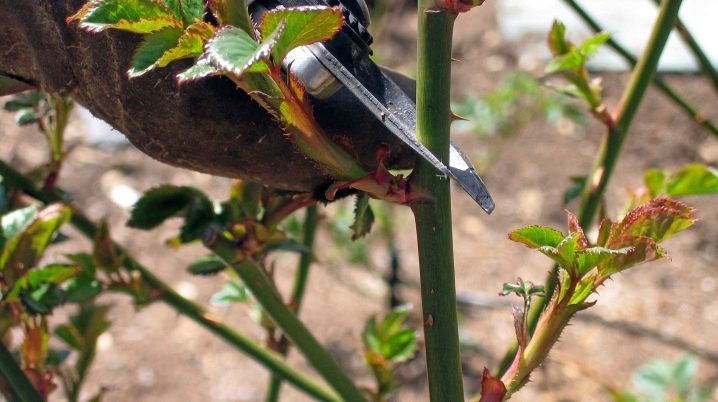
Therefore, pruning too short leads to loss of buds. In the summer, pruning is also indispensable. Dried branches should be removed immediately, as well as withered flowers. Occasionally, thinning of the crown of a bush rose should be done so that natural ventilation is carried out. It minimizes the risk of developing disease. Shoots that are too long can also be pruned depending on the desired crown shape.
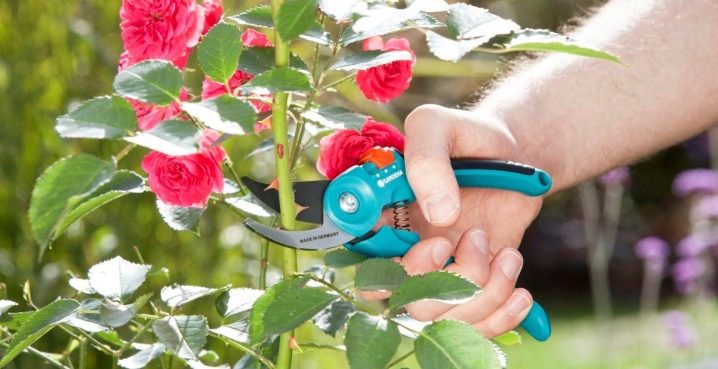
How to prepare for winter?
Preparation of spray roses for winter should be carried out in the fall. It is necessary to cut off all ripe stems, dried shoots and lubricate the cuts with garden pitch. All leaves, without exception, should be removed and destroyed, after which the plant should be treated with Bordeaux liquid. When stable low temperatures are established at night, you need to prepare a winter shelter.
For warm regions of the country, you can limit yourself to ordinary sawdust, sprinkled with a slide on a cut plant. For more severe climatic conditions, it is recommended to build a kind of hut for wintering bush roses. It is based on two arcs, over which a cover is put on. From above, this house is covered with insulation and film. In early spring, on fine days, it is better to air the roses to prevent diaper rash.
For an overview of caring for bush roses, see the video below.

































































































How beautiful!!!
The comment was sent successfully.